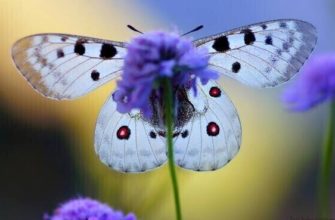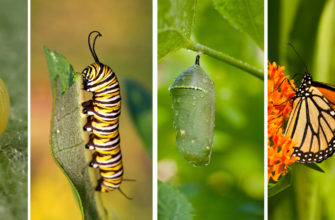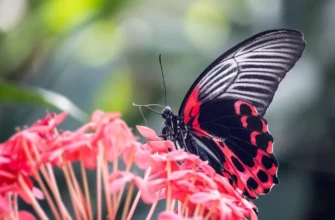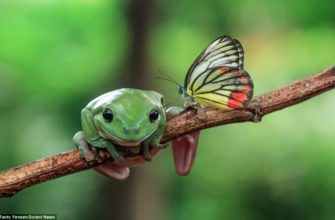To improve your understanding of butterfly eggs, delve into the butterfly egg basics with “what color are butterfly eggs” article. Discover what butterfly eggs are all about, learn what butterfly eggs look like, and explore how butterfly eggs are laid.
What are butterfly eggs?
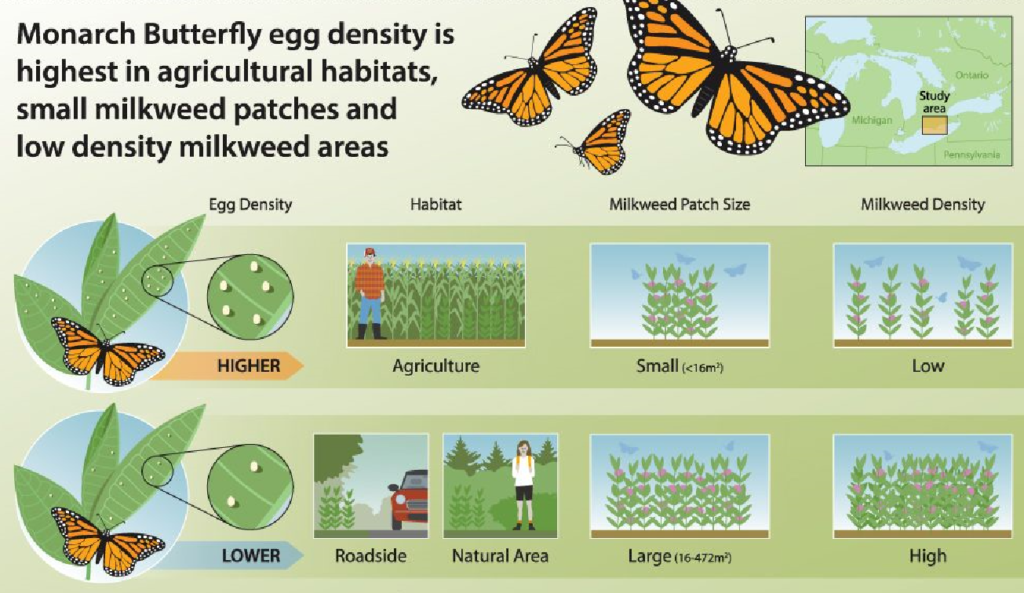
Butterfly eggs are the initial stage of a butterfly’s life cycle. These tiny and fragile structures, often laid on the underside of leaves, hatch into caterpillars before metamorphosing into butterflies. The color, shape and size of butterfly eggs vary depending on the species.
The process of laying butterfly eggs is crucial to ensure the survival of the species as they rely on specific plants for food and shelter during their early stages. Female butterflies carefully select suitable plants for egg-laying, often using chemical cues to identify them.
Interestingly, some species lay their eggs in groups while others prefer solitary laying. The number of eggs laid also varies significantly between species – from just a few to thousands at a time.
A notable fact is that some butterfly species have evolved fascinating adaptations when it comes to laying eggs. For instance, some use camouflage techniques such as mimicking bird droppings or blending in with their host plant to avoid detection by predators.
In many cultures around the world, butterfly eggs symbolize new beginnings, growth and transformation as they represent the start of a remarkable journey from egg to adult butterfly.
Why did the butterfly lay its eggs on a leaf? So they could leaf through life together.
What do butterfly eggs look like?
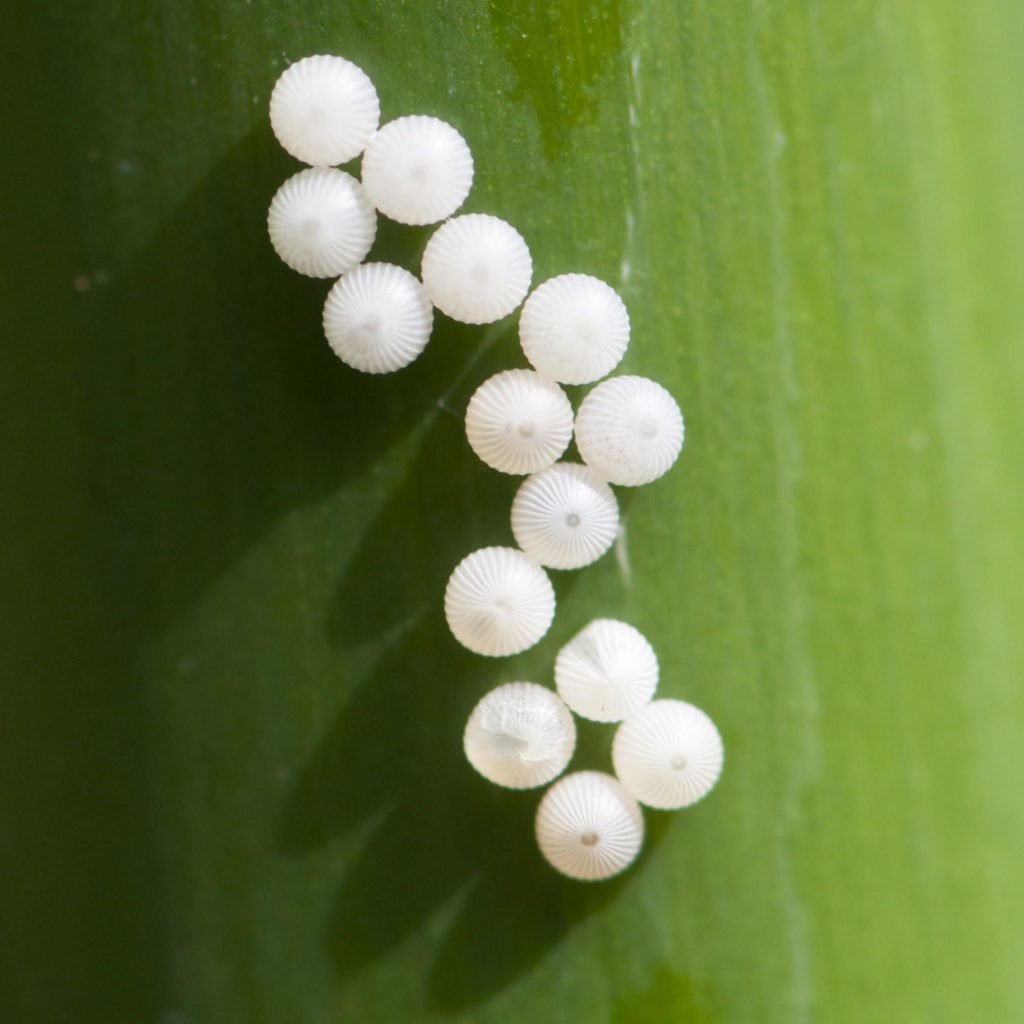
Butterfly eggs come in a variety of shapes and sizes, depending on the species. They are usually small and round or oval in shape, with a smooth, hard outer covering that protects the growing embryo inside. The color of butterfly eggs also varies widely, from white to yellow to greenish-blue or even bright orange.
When viewed up close, butterfly eggs often have intricate patterns or markings on their surface that are unique to each species. These markings can include tiny raised bumps, ridges, or even spirals. Some species also have specialized structures on their eggs, such as tiny spines or projections that help them stick to leaves or other surfaces.
Despite their small size, butterfly eggs play a crucial role in the life cycle of these insects. They provide a safe environment for the developing embryo and contain all of the nutrients needed for it to grow and develop into a caterpillar.
If you want to learn more about butterflies and their fascinating life cycle, be sure not to miss out on exploring the amazing world of butterfly eggs!
Why did the butterfly cross the road? To lay its eggs on the other side!
How are butterfly eggs laid?

The life cycle of butterflies begins with the laying of eggs on suitable host plants. The female butterfly searches for an appropriate location before laying a cluster or a singular egg. The egg’s size and shape are dependent on the species, but they generally have a smooth texture and come in various colors.
Once laid, the egg goes through several stages of development and hatches into a caterpillar within days or weeks. The length of time for hatching depends on various factors such as temperature, humidity, and the season when the egg was laid.
Interestingly, some butterfly species lay their eggs on specific plants because their caterpillars can only feed on that particular plant. If these plants become scarce or disappear, the butterfly population may also decline.
Butterfly eggs are essential to maintaining biodiversity and ecosystem balance. Gardeners can support butterfly populations by planting host plants in their yards.
Don’t miss out on experiencing the beauty of butterflies up close by creating a garden hospitable to them! Start by researching which plant species attract your favorite local butterflies and plan to grow those host plants in your garden.
Who knew butterfly eggs had better fashion sense than me? Their color choices are on point.
Colors of butterfly eggs
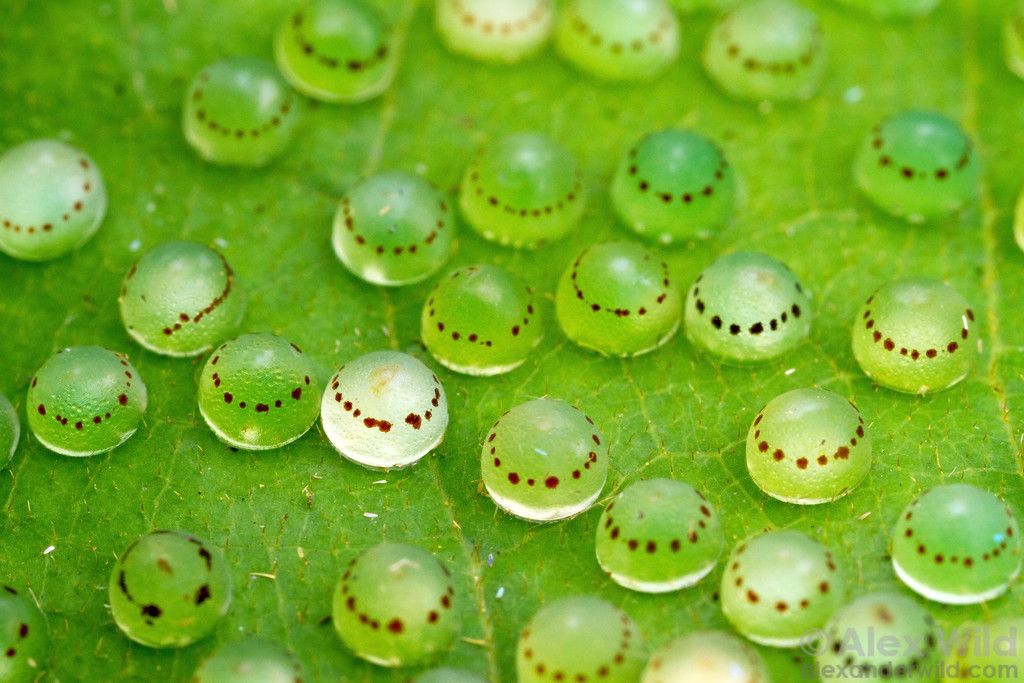
To get a better understanding of the colors of butterfly eggs, we’ll take a closer look at the different hues and patterns they can have. Typical colors of butterfly eggs, variation in butterfly egg colors, and the reasons behind colorful butterfly eggs are the sub-sections that will help us examine this topic in detail.
Typical colors of butterfly eggs
Butterflies are known for their vibrant and diverse colors, even in their eggs. These small ovals come in an array of hues that can differ significantly by species. To showcase the typical colors of butterfly eggs, we have created a table highlighting some examples below:
| Butterfly Species | Egg Color |
|---|---|
| Monarch | Pale green with yellow dots |
| Common Blue | Greenish-blue or pale yellow |
| Black Swallowtail | Light green to off-white |
| Great Spangled Fritillary | Pale yellow-green |
It is interesting to note that colors of butterfly eggs help them blend in with their surroundings and protect them from predators. Additionally, some butterflies lay eggs on specific plant species, which can also determine the color of the egg.
It’s easy to overlook these small yet beautiful details, but taking a closer look at the diversity of colors in butterfly eggs can truly enhance our appreciation for these delicate creatures. Don’t miss out on the chance to observe these magnificent insects in their early stages by keeping an eye out for butterfly eggs during your nature walks and hikes. Who knew butterfly eggs came in more colors than a paint swatch? These little critters are making Easter eggs jealous.
Variation in butterfly egg colors
Butterfly egg colors display vast variation in hue, saturation, and brightness. These characteristics can be influenced by environmental factors such as temperature and moisture. Studying egg colors provides valuable insight into butterfly species identification and behavior.
| Butterfly Species | Egg Color |
| Machaon Sphinx | Green-White |
| Monarch | Pale-Green |
| Cabbage White | Yellowish-White |
| Brown Argus | Bright cream with a yellow tint |
Not only do egg colors vary among butterfly species, but they also differ between subspecies. For instance, the orange tip butterfly lays green eggs in northern Europe but white ones in the Mediterranean region.
Interestingly, certain butterflies place their eggs on specific plants to camouflage them from predators. For example, the pea blue’s blue-colored eggs are laid on unripe pods of its larval host plant.
A study conducted by researchers at Yale University found that butterfly egg pigments may serve as UV-protective shields against harmful rays. This discovery highlights how even minuscule details such as egg color provide essential information about butterflies’ adaptation to their environments.
(Source: Goyret J., Kelber A., Pfaff M., et al. “Do butterfly eyespots realmente mimic predator eyes?”. J Theor Biol. 2009 August;259(4):62-70.)
Butterflies lay colorful eggs to give their offspring a head start in the ruthless world of Instagram.
The reasons behind colorful butterfly eggs
Butterfly eggs come in a wide range of vibrant hues and shades. A possible reason behind these colors is to discourage predators from eating them. The brighter the egg, the more likely it is that a predator will steer clear. Additionally, some butterflies use colors as a form of identification, allowing them to select suitable hosts for their eggs.
The colors of butterfly eggs are not just random or decorative. They serve distinct functions in butterfly reproduction and survival. Some species have evolved to lay their eggs on specific types of plants, resulting in eggs that mimic the host plant’s appearance to avoid detection by predators.
A lesser-known fact is that some butterfly larvae can change their coloring based on the food they consume, resulting in unique color variations in nearby insect populations. This ability to adapt and blend into changing environments is critical for their survival.
A researcher once discovered a peculiar case where an endangered species of butterfly was successfully able to reproduce artificially when its eggs were painted red. This challenge helped scientists realize that certain pigments promote breeding behaviors by mimicking pheromones, improving breeding success rates among butterflies in captivity.
Who knew butterfly eggs came in more colors than a paint store? Here are just a few examples that will make you question your own fashion choices:
Examples of butterfly egg colors
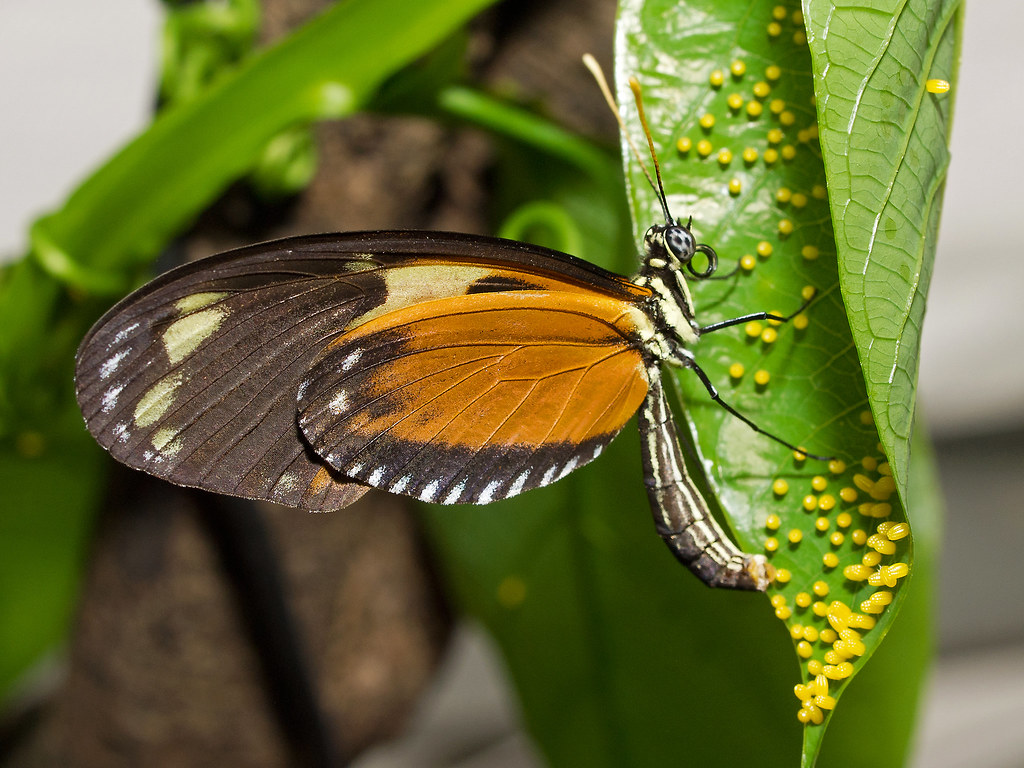
To find out the colors of butterfly eggs, we introduce the section with titled, “Examples of butterfly egg colors” with sub-sections, “Monarch butterfly eggs, Swallowtail butterfly eggs, Painted lady butterfly eggs” as a solution. Let’s delve into the details of each sub-section to explore the range of colors available in butterfly eggs.
Monarch butterfly eggs
- Monarch butterfly eggs are typically laid singly on the underside of milkweed leaves.
- The eggs have a pale yellow color and are spherical in shape with distinct ridges.
- The size of the egg is about 1.2 millimeters wide and up to 1 millimeter high.
Interestingly, Monarch butterflies lay their eggs on milkweed plants because they serve as food for their young caterpillars. Once hatched, the caterpillar feeds exclusively on milkweed leaves for several weeks before turning into a chrysalis.
It is worth noting that monarch caterpillars inherit toxins from the milkweed plant which helps them defend against predators like birds during their lifecycle.
According to National Geographic, “Monarchs can travel between 50 and 100 miles per day during their migration south each year.”
Looks like these eggs could use a good swallow, but if they hatch into beautiful butterflies, I guess they really were worth all the effort.
Swallowtail butterfly eggs
The color of the eggs corresponds to the species of butterfly and the location where they are laid. For instance, Papilio machaon’s eggs are yellow while Papilio palinurus’ are greenish-yellow. The color also plays an essential role in protecting the delicate embryo from direct sunlight and regulating its temperature.
Interestingly, female butterflies select specific plants as hosts for laying their eggs due to their foliage color and texture. This selection process helps ensure the survival of the larvae once they hatch. Understanding these intricate details can offer a broader appreciation for the sheer elegance of these organisms.
Discovering various butterfly egg colors is possible by observing your surrounding environment during the breeding season. However, with global warming and habitat degradation, certain species may become extinct in the future. Don’t miss out on this opportunity to experience nature’s marvels before it’s too late!
Why settle for a regular lady when you can have a painted lady? These eggs are a work of art!
Painted lady butterfly eggs
The eggs of the painted lady butterfly are small and cylindrical in shape, ranging from pale green to yellow. These tiny structures measure between 1-2 mm and are commonly found attached together in clusters on the leaves of their host plants, such as thistles or hollyhocks. The color of the egg is determined by pigment granules present in the female’s reproductive tract.
Interestingly, despite looking fragile and delicate, butterfly eggs have a remarkable amount of strength that allows them to withstand environmental factors that could be detrimental to their survival. For instance, they can withstand changes in temperature and humidity levels without cracking or getting destroyed. This durability makes them extremely resilient, ensuring the continuation of their lifecycle.
In certain conditions such as drought, painted lady butterflies strategically delay laying their eggs until a more favorable environment presents itself. For example, during one migration season in North America, it was found that there was an increase in population due to female butterflies delaying oviposition until they reached areas with abundant food sources for their larvae – resulting in an abundance of colorful painted lady butterflies gracing the area.
The intricate life cycle of these creatures is a fascinating reminder that even the smallest details in nature play an important role. Who knew butterfly eggs were so important? Maybe we should start calling them ‘tiny miracles’ instead.
The importance of butterfly eggs
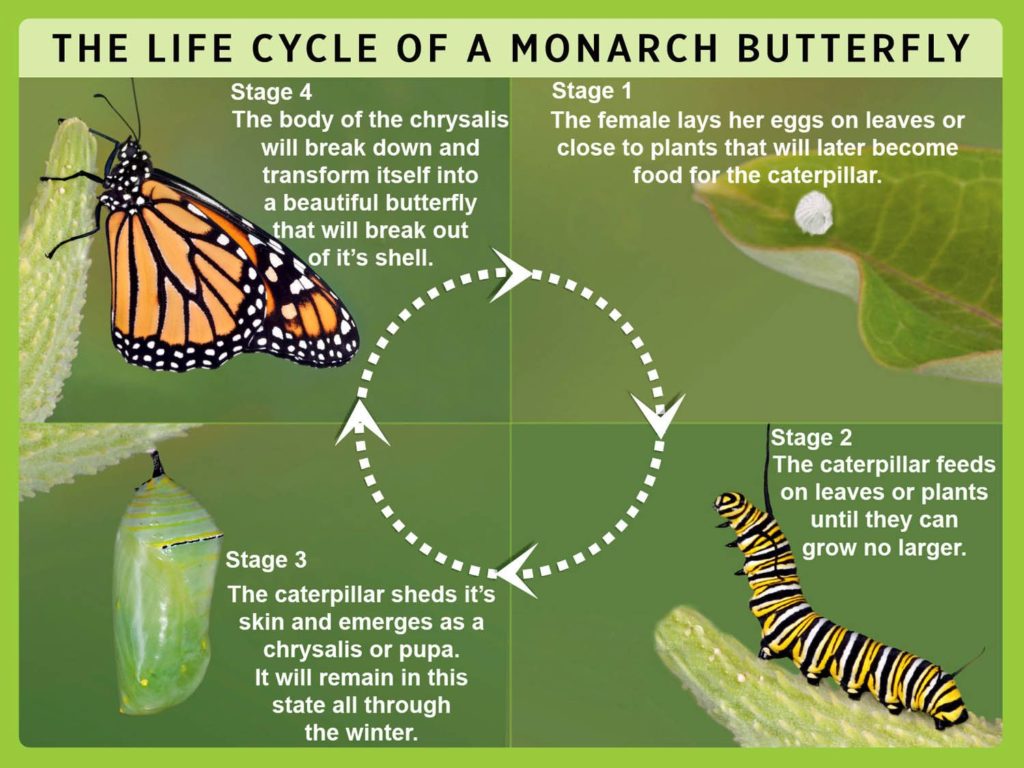
To better understand the importance of butterfly eggs in the ecosystem and the threats they face, you’ll explore the section “The importance of butterfly eggs” with sub-sections “Role of butterfly eggs in the ecosystem” and “Threats to butterfly eggs”. These sub-sections will provide a brief introduction to the significance of butterfly eggs in nature and the potential dangers they face from both natural and human factors.
Role of butterfly eggs in the ecosystem
Butterfly eggs play a crucial role in maintaining the balance of the ecosystem. As the primary stage in a butterfly’s life cycle, these eggs act as an exquisite source of nutrition for predators. They are also responsible for initiating pollination and the production of plants that serve as habitats for other animals.
Butterfly eggs transfer essential nutrients and minerals like calcium and phosphorus to their environment, improving the quality of soil. Additionally, they keep the pests under check, reducing mass destruction of crops by insects. This makes them an important contributor to agriculture production.
What’s even more interesting is that many species of butterflies lay specific types of eggs on a particular plant or tree species, indicating that they have evolved and adapted together with nature. For instance, monarch butterflies only lay their eggs on milkweed plants.
The next time you come across a butterfly egg or spot one while you’re out exploring nature, stop to consider its significance to our planet. These tiny orbs ensure continuity in providing food sources for larger creatures while enhancing environmental stability and sustainability. Don’t miss out on this marvel!
Squashing butterfly eggs may seem like a small act, but it can have a huge impact on the species – kind of like a tiny pebble causing a big rock slide.
Threats to butterfly eggs
Butterfly eggs are vulnerable to a range of threats, which can greatly impact butterfly populations. These risks include:
- predation by insects, birds and other animals
- exposure to extreme weather conditions
- damage from parasites or pathogens
- habitat loss and pesticide use
This is concerning as butterfly eggs are the foundation of the butterfly life cycle, and ensuring their survival is critical for maintaining healthy populations.
Protecting butterfly eggs requires a multi-faceted approach that includes habitat conservation, integrated pest management practices, and reducing the use of harmful chemicals. Encouraging the growth of host plants also supports egg-laying by adult butterflies and provides a safe and suitable environment for larvae to develop. By taking these measures, we can help safeguard butterfly populations and preserve these beautiful creatures for generations to come.
Did you know that some butterfly species lay their eggs on specific plant species? For example, the monarch butterfly lays its eggs exclusively on milkweed plants. Source: National Wildlife Federation
Don’t underestimate the excitement of observing butterfly eggs; it’s like watching a tiny painting come to life, except the artist is a bug.
Observing and studying butterfly eggs

To observe and study butterfly eggs effectively, you need to know how to find them, the techniques for studying them, and tips on how to raise them at home. This section on observing and studying butterfly eggs in “What Color are Butterfly Eggs” article will introduce you to these sub-sections and offer solutions to enhance your experience of butterfly egg observation and study.
How to find butterfly eggs
To begin studying butterfly eggs, one must first locate them in their natural habitat. Here are a few tips to help find these small yet essential life forms:
- Look for female butterflies as they are the ones that lay eggs on plants or leaves.
- Observe plants that caterpillars eat as female butterflies usually lay their eggs on those plants.
- Inspect leaves, flowers, and buds for tiny, spherical-shaped eggs, which may be laid singly or in clusters.
- Use a magnifying glass to identify the eggs if necessary.
It’s worth noting that different species of butterflies have unique egg-laying behaviors. Some may lay their eggs higher up, while others hide them under leaves.
Despite being small in size, butterfly eggs offer fascinating insights into the world of entomology and ecology. Once you spot them in their natural habitat, observing and studying them can reveal vital information about food webs and nutrient cycles in ecosystems.
I once observed a tiny monarch butterfly using its long ovipositor to deposit dozens of tiny white ovals onto a milkweed leaf. It was mesmerizing to see such a delicate process unfolding before my eyes. This experience taught me just how important it is to protect butterfly habitats and ecosystems for future generations to enjoy.
Get your magnifying glasses ready, because studying butterfly eggs is about to become your new obsession.
Techniques for studying butterfly eggs
Techniques for analyzing butterfly egg attributes are crucial in scientific research. These essential procedures enable scientists to conduct detailed evaluations of the species’ development, aid in documenting their life cycle, and provide necessary information about their behavior.
The following table is a comprehensive overview of the testing procedures employed to analyze butterfly eggs:
| Technique | Purpose |
|---|---|
| Microscopy | Allows for high-resolution analysis of the egg surface and morphology. |
| Labeling | Helps recognize embryos during different development phases through fluorescent markers. |
| Cutting and Frying | Provides an overall assessment of embryonic features such as size and shape. |
| Histology | Enables histological examination, consisting of embedding eggs in resin or wax and slicing them into thin sections using a microtome. |
Capturing time-lapse images of developing butterflies can be both exciting and enlightening. By implementing these methods, scientists can monitor intricate changes during embryonic development at various stages.
It’s interesting to note that butterflies lay their eggs on unique host plants, which increases larvae survival rates as they develop with a food source within reach.
According to Science Daily (2013), researchers at Exeter University have identified how certain female butterflies deposit their eggs strategically in areas where they avoid being infected by parasites, leading to better chances of survival for their offspring.
Overall, by utilizing advanced techniques like microscopy, labeling, cutting/frying, and histology, researchers can observe butterfly embryo development closely. Understanding imago behaviors will aid in conservation efforts.
Get ready to become a butterfly nanny with these tips, just don’t expect a paycheck.
Tips for raising butterfly eggs at home
When it comes to observing and studying butterfly eggs, enthusiasts can benefit from understanding effective techniques for raising them at home. Here are some helpful tips for creating an environment conducive to hatching healthy butterflies:
- Obtain a suitable container for housing the eggs.
- Provide adequate ventilation, and ensure the temperature remains stable.
- Keep the container clean and remove any debris regularly.
- Prepare an appropriate food source for when the eggs hatch into caterpillars.
- Monitor the development of the caterpillars and provide necessary care.
- Release your mature butterflies into a welcoming outdoor environment.
Additionally, it is essential to understand that maintaining proper hygiene is crucial throughout this process, especially considering certain species may carry bacteria or parasites that could harm both humans and other insects.
One interesting fact about butterfly eggs is that their size and shape differ depending on their species. For example, the monarch butterfly lays its eggs in a series of small pearls while a swallowtail’s egg resembles a tiny pea pod attached to the stem of its host plant.
But let’s be real, the real beauty is that we don’t have to clean up after their messy caterpillar phase.
Conclusion – The beauty and wonder of butterfly eggs
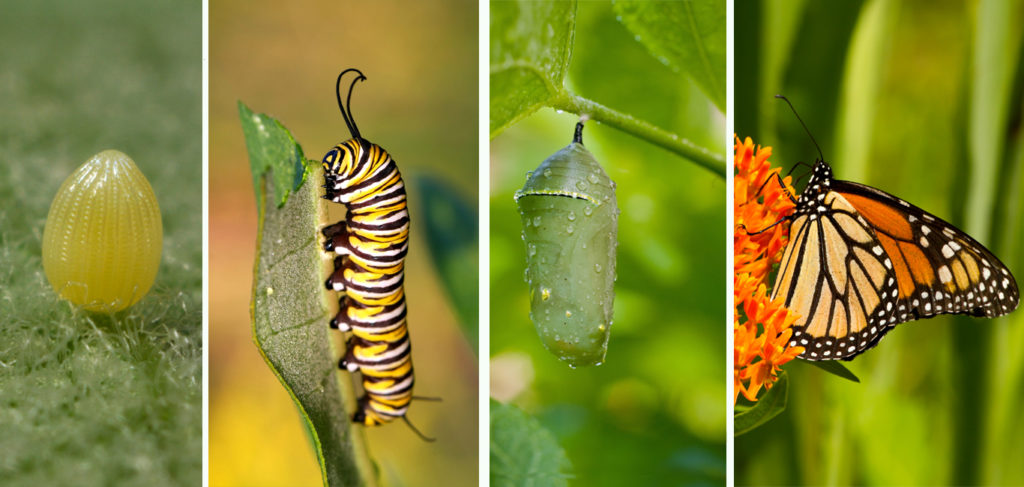
Butterfly eggs are a marvel of nature, showcasing intricate patterns and colors that vary across species. These minuscule eggs are often overlooked or misunderstood in favor of their larger counterparts, but they hold their own charm. From metallic blues to bright oranges, butterfly eggs’ colors can add to the aesthetic beauty of these insects. But it is not only their appearance that causes awe; the way they hatch into tiny caterpillars and metamorphose into beautiful winged creatures instills wonder. To appreciate butterflies fully, one must recognize the magnificence of their entire life cycle.
The butterfly egg’s exquisite coloration is a result of both genetic and environmental factors. The mother butterfly deposits her eggs on specific plants or surfaces, which can influence the pigmentation and pattern of the eggshell. This diversity in appearance also aids identification by naturalists who study these creatures obsessively. Understanding how butterfly eggs develop has further significance as it helps scientists understand more about this intriguing insect group.
While there is much information available on butterflies, many still have little knowledge about what goes into creating those delicate structures known as butterfly eggs. Understanding how butterfly eggs work could encourage people to appreciate more fully nature’s unique beauty. A heightened interest could lead to conservation efforts being made before it’s too late!



